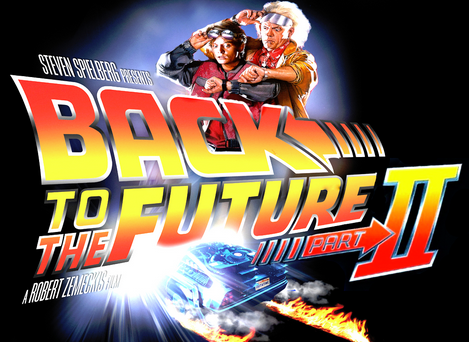‘Back to the Future’ Predictions: What They Got Right & Wrong

December 7, 2015
Oct. 21, 2015 marked an important day for the fans of “Back to the Future.” In the second movie of this time traveling trilogy, three main characters (Marty, Doc, and Jennifer) focus on repairing a horrific future. Most of this film focuses on the future, along with all of its gadgets and new technology.
Taking place in 2015, the movie had many hits with its predictions, but also many misses (flying cars just didn’t make it). So what did the movie get spot on, and what was it far from getting right?
To predict 30 years away what technology could be seen in the future is an ambitious task, but surprisingly enough, the film succeeded with many of its foresights. Video conference technology such as Skype, for one, definitely plays a large part in people’s lives today. And who could imagine living without the flat screen television?
The movie also suggests the idea that biometric identification would become more popular. With phones that unlock with just a fingerprint, or doors that open from a heartbeat, 2015 really has proven to be a different year from 1985. And one feature that shows how inventive 2015 has become: holographic displays. With this technology that uses lasers to recreate multidimensional models of objects, it’s still pretty hard to believe such an idea has been created so quickly. Along with 3D films, tablet technology, and drones, the 21st century has shown a vast improvement in its sciences.
But with the movie’s predictions that came true, many of them proved to be far from 2015’s capabilities. Self-lacing shoes and flying cars are innovative ideas, but are still in development. And while hoverboards are coming closer to being released in the market, they aren’t nearly as advanced as the ones presented in the film. Imagine the possibilities on the cosmetics market with the film’s “rejuvenation mask,” a product that could literally make men and women look years younger.
Even though this generation missed out on some of these great ideas, society did benefit from one prediction they got wrong: phone booths. The producers of the film assumed fax machines and phone booths would still be the preferred method of communication. Who could imagine their daily lives not including cell phones?
And for our future technological advances, what can we expect?
“It would probably be the same,” Daniel Norat (11) said.
Others, like Chris Taylor (11) and Cameron Lopez (12), think that the future could hold some promising technological advancements.
“Maybe lightsabers,” he said. “Or cars that go underwater. That would be cool.”
“Hoverboards would probably be a given,” Lopez said.
Will all of these predictions come true? Maybe in the next 30 years.

